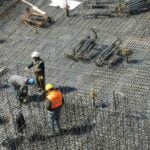A crucial aspect of managing any construction project—be it small scale or large scale—involves the planning and control of the cost. Cost control procedures are typically employed to make sure that a project costs no more than intended.
Besides, the pre-planned budget helps prevent construction project cost overruns and scheduling delays while ensuring the completion of the project as per time estimates and maintaining the forecasts of material, labor, and overhead expenses.
The first step in deciding a realistic cost target is a well-devised definition of the scope of work. This is where the role of the project manager comes to play. He/she must be able to translate the client’s demands into specific objectives and tasks. In cost control, the most important tool is the standard cost code or code of accounts. The cost code not only classifies each distinct subdivision of a project but also acts as a common medium of communication for everyone working on the project. Each control account is meticulously examined to figure out the workload, method to be implemented, crew size, the time required, and other resource particulars. A suitably formulated cost code can, therefore, bolster the cost engineering process and in turn streamline project management.
To bring off effective cost control, every real estate contractor or project managers must refer to the following construction cost control techniques:
- Preliminary Cost Approximations: Prior to the execution of construction plans, cost estimates merely indicate the aim of the funding unit. Not all civil engineers and architects are proficient in cost estimation. This is why most builders hire management firms and project in-charges with sufficient expertise in cost estimation and time optimization early on in any project of significance. The foremost responsibility of the project manager is to evaluate the original ideas as they are submitted. If his/her cost estimates for the ideas reveal discrepancies, the latter needs to be further revised so as to match the approximations.
- Comprehensive Assessments: After the final ideas are put forward, the project manager and the accountant should together go through the ideas and prepare detailed estimates for materials, labor, and construction overhead. The estimates for time distribution should also be devised with much caution because the cost depends a lot on time. Most often, projects that fall behind schedule are likely to go over budget.
- Construction Budget Delineation: Having made all the necessary estimates, the project manager, along with the construction accountant, should create a scheme with in-depth cash flow estimates based on the final construction plan. This document will serve as the project road map. Thereafter, the goings-on in the construction can be compared with the project schedule and reorganized accordingly. As long as costs and timelines align with the estimations, the project can be deemed to be under control financially. In case there is a deviation in the routine or cost overrun, it is a sign of potential difficulties. Here, a pre-coordinated and thorough analysis of the discrepancies might come to the rescue by instructing how they can be solved.
- Prediction for Cost Control: Conventional financial accounting is historical in the sense that it briefs you on what has been taking place. With respect to budget optimization in construction, one must see that the cost control procedures are employed in a way that they predict future costs. To this end, it is imperative that one keeps an eye on completion schedules via a cycle of transitional milestones. It is not enough to simply wait for the end of a project segment. Citing a relevant instance, cost estimates for materials, labor, and timeline for window installation may have numerous progress milestones. Once the first landmark is reached, the elements of cost viz., labor, overhead, time frame, and materials can be settled on. If the cost surpasses the estimation, a prediction of successive milestones can be made and thereby one can initiate necessary steps to turn around the conditions that led to the excess in the windows installing schedule. In the same way, the project manager may also look for ways to retrieve the surplus in other budgeted schedules.
- Final Management of the Project: Last but not least, the project in-charge must check the development of the project to make sure it is within schedule. In addition, control graphs need to be set up so that all the recruits can keep their work under statistical control. Manpower requirements can later be examined to confirm the efficient utilization of resources. Eventually, the calculated expenses have to be deftly controlled so that there is no unwanted wastage.
In line with the techniques discussed, it can be deduced that cost control techniques in construction are indeed vital for the successful completion of large scale projects within a given timeline, budget, and according to the laid-out specifications. To put it succinctly, a fully defined project cost estimation is bound to serve as a touchstone for budget control, further simplified by the suggested techniques.



